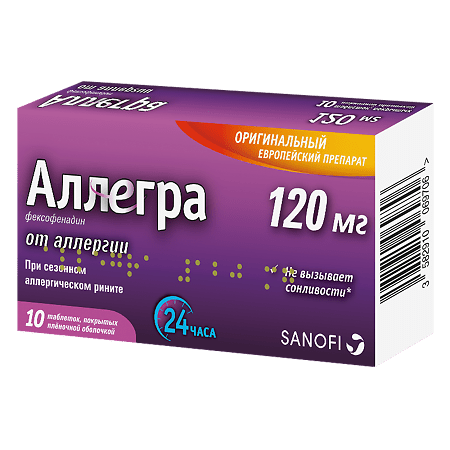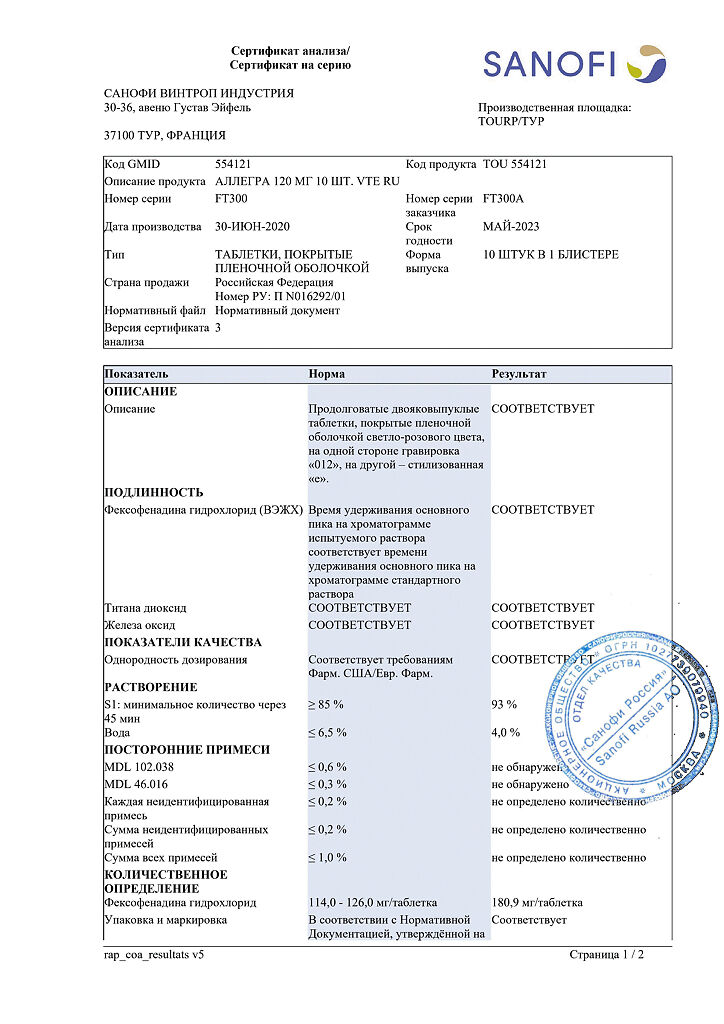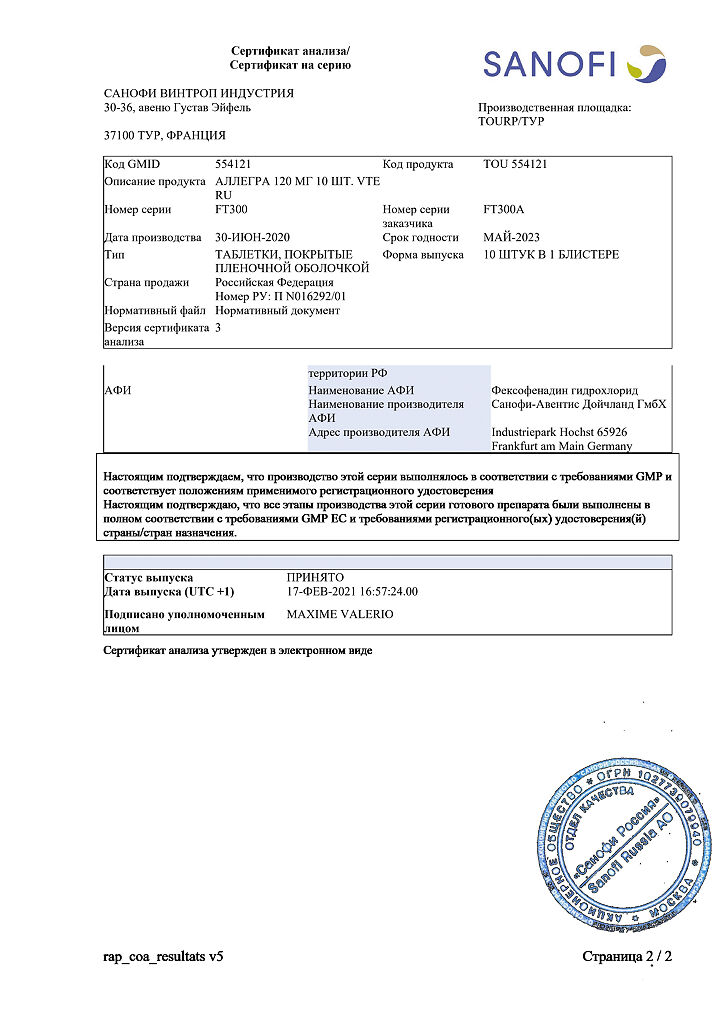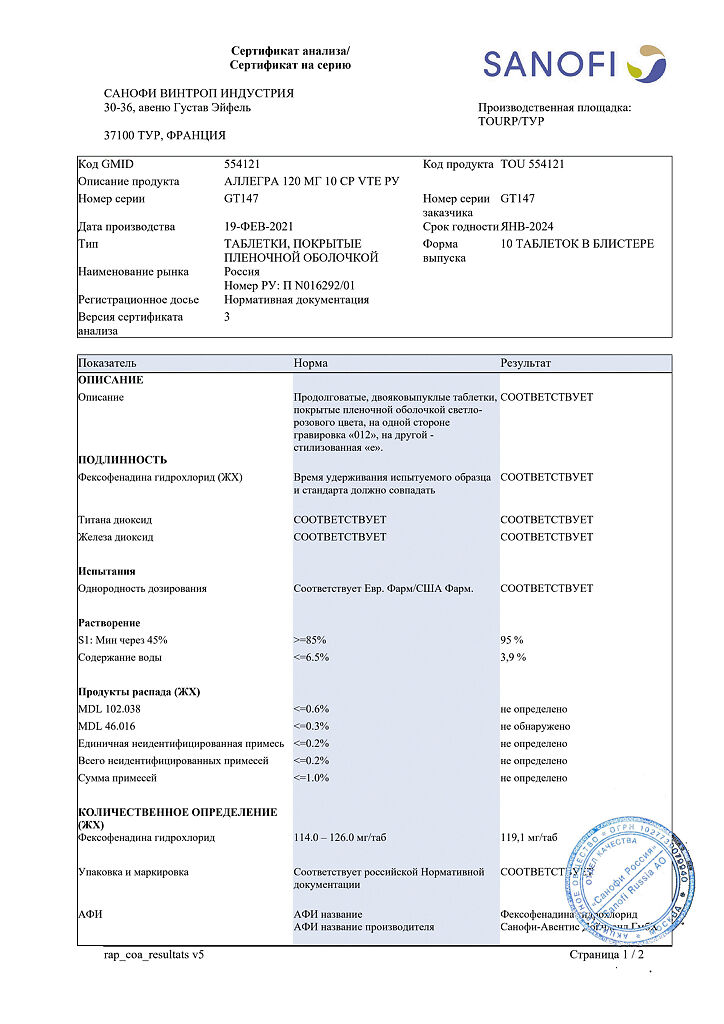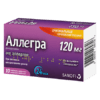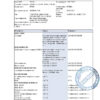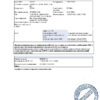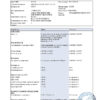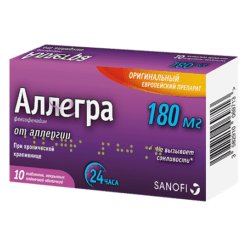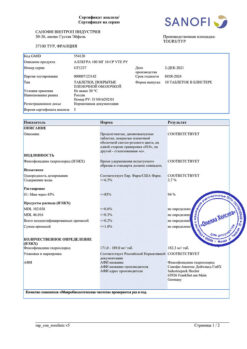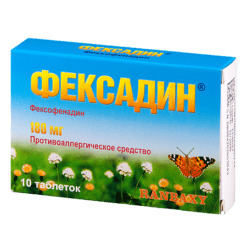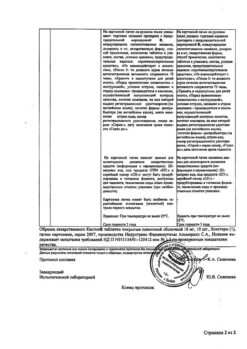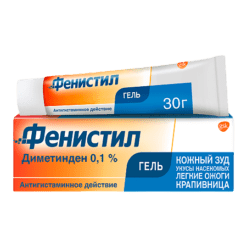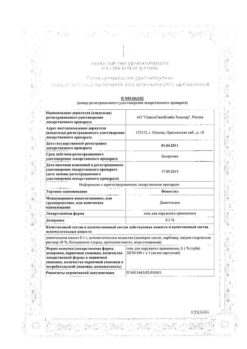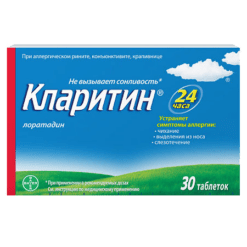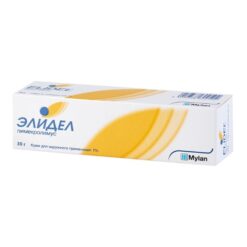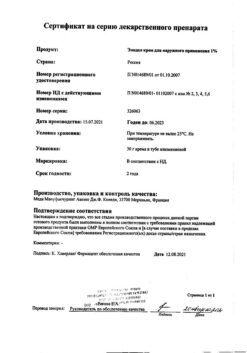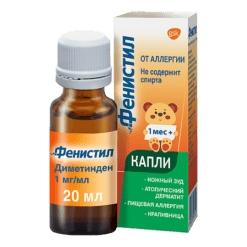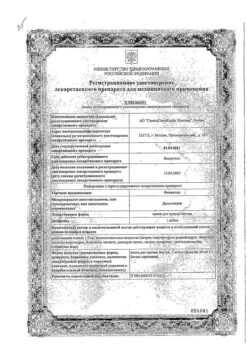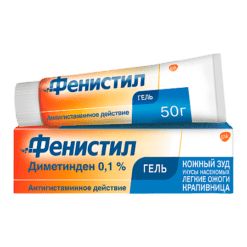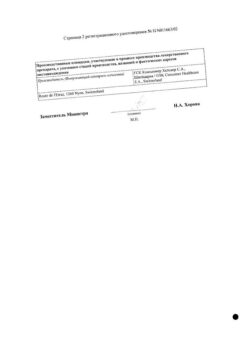No products in the cart.
Description
Fexofenadine (pharmacologically active metabolite of terfenadine) is an antihistamine with selective antagonistic activity to H1-receptors without anticholinergic and blocking alpha-adrenergic receptors. Besides this, fexofenadine has no sedative action and other effects on the central nervous system.
In human studies evaluating histamine-induced blistering and hyperemia, the antihistamine effect of fexofenadine taken orally once or twice daily is seen after 1 hour, reaches a maximum after 6 hours, and lasts for 24 hours after its administration.
Even after 28 days of taking fexofenadine, no development of tolerance to the drug has been identified. With single oral administration of fexofenadine, a dose-dependent increase in antihistamine effect was observed with increasing doses from 10 mg to 130 mg. Using the same model of antihistamine action, it was found that a dose of at least 130 mg was required for a continuous 24-hour action. Maximum suppression of blistering and skin hyperemia was over 80%.
In patients with seasonal allergic rhinitis receiving up to 240 mg of fexofenadine 2 times daily for 2 weeks, QTc (QT corrected) interval duration was not different from that with placebo.
There was also no change in QTc when fexofenadine was taken by healthy volunteers at 60 mg 2 times daily for 6 months, 400 mg 2 times daily for 6.5 days, and 240 mg daily for 1 year compared with QTc duration when taking placebo.
Even at plasma concentrations 32 times therapeutic concentrations in humans, fexofenadine had no effect on delayed rectifier potassium channels in the human heart.
Indications
Indications
— Seasonal allergic rhinitis (to reduce symptoms) – tablets, 120 mg;
– chronic idiopathic urticaria (to reduce symptoms) – tablets, 180 mg.
Pharmacological effect
Pharmacological effect
Fexofenadine (a pharmacologically active metabolite of terfenadine) is an antihistamine with selective H1 receptor antagonist activity without anticholinergic and alpha-adrenergic receptor blocking effects. In addition, fexofenadine does not have a sedative effect or other effects on the central nervous system.
In human studies assessing histamine-induced wheals and flushing, the antihistamine effects of fexofenadine taken orally once or twice daily appeared within 1 hour, peaked at 6 hours, and continued for 24 hours after dosing.
Even after 28 days of taking fexofenadine, no development of tolerance to the drug was detected. With a single oral dose of fexofenadine, a dose-dependent increase in the antihistamine effect is observed when the dose is increased from 10 mg to 130 mg. Using the same model of antihistamine action, it was found that a dose of at least 130 mg was required for continuous action over 24 hours. The maximum suppression of blistering and skin hyperemia is more than 80%.
In patients with seasonal allergic rhinitis who received up to 240 mg of fexofenadine 2 times a day for 2 weeks, the duration of the QTc interval (QT corrected) did not differ from that when taking placebo.
There were also no changes in QTc observed when healthy volunteers took fexofenadine 60 mg twice daily for 6 months, 400 mg twice daily for 6.5 days, and 240 mg daily for 1 year compared with QTc duration when taking placebo.
Even at plasma concentrations 32 times higher than therapeutic concentrations in humans, fexofenadine had no effect on delayed rectifier potassium channels in the human heart.
Special instructions
Special instructions
It is recommended that a minimum of 2 hours be allowed between taking fexofenadine and antacids containing aluminum or magnesium hydroxide.
For use in children from 6 to 11 years old, 30 mg tablets are available.
Impact on the ability to drive vehicles and operate machinery
When taking the drug, it is possible to perform work that requires a high concentration of attention and speed of psychomotor reactions (with the exception of patients who have a non-standard reaction).
Therefore, it is recommended to check your individual response to fexofenadine before engaging in such activities.
Active ingredient
Active ingredient
Fexofenadine
Composition
Composition
Light pink film-coated tablets, oblong, biconvex, engraved “012” on one side and a stylized “e” on the other.
Excipients:
croscarmellose sodium – 24 mg,
pregelatinized starch – 120 mg,
microcrystalline cellulose – 133 mg,
magnesium stearate – 3 mg.
Shell composition:
hypromellose E-15 – 2.84 mg, hypromellose E-5 – 1.89 mg, povidone – 510 mcg, titanium dioxide (E171) – 2.025 mg, colloidal silicon dioxide – 730 mcg, macrogol 400 – 3.94 mg, pink mixture of iron oxide dye (iron oxide red (E172), titanium dioxide (E171)) – 250 mcg, yellow mixture of iron dye (yellow iron oxide (E172), titanium dioxide (E171)) – 40 mcg.
Pregnancy
Pregnancy
Pregnancy
There is not enough data on the use of fexofenadine in pregnant women. Limited animal studies have shown no evidence of adverse effects on pregnancy, fetal development, childbirth or postnatal development. Fexofenadine should not be used during pregnancy.
Lactation
There are no data on the content of fexofenadine in breast milk when taken by breastfeeding women. However, when taking terfenadine, it was observed to penetrate into the breast milk of lactating women. Therefore, the use of fexofenadine during breastfeeding is not recommended.
Contraindications
Contraindications
– Hypersensitivity to any of the components of the drug;
– pregnancy;
– lactation period;
– children’s age (up to 12 years).
With caution:
– in patients with chronic renal and liver failure, as well as in elderly patients (lack of clinical experience in this category of patients);
– in patients with cardiovascular diseases, including those with a history (antihistamines can cause palpitations and tachycardia).
In case of impaired renal function.
Use with caution in chronic renal failure. No dosage regimen adjustment is required.
In case of liver dysfunction.
Use with caution in chronic liver failure. No dosage regimen adjustment is required.
Side Effects
Side Effects
In placebo-controlled clinical trials, the most common (≥1%) were headache (7.3%), drowsiness (2.3%), dizziness (1.5%) and nausea 1.5%. With fexofenadine, the incidence of the above adverse effects was similar to that with placebo.
In placebo-controlled studies, with an incidence of less than 1% (equal with fexofenadine and placebo) and post-marketing use of the drug, weakness, insomnia, nervousness, and sleep disturbances or unusual dreams (paroniria) such as nightmares were reported; tachycardia, palpitations; diarrhea.
Interaction
Interaction
When fexofenadine is co-administered with erythromycin or ketoconazole, the plasma concentration of fexofenadine increases 2-3 times, but this is not associated with a significant prolongation of the QTc interval. There were no significant differences in the incidence of adverse effects when using these drugs in monotherapy and in combination. Animal studies have shown that the above-mentioned increase in plasma concentrations of fexofenadine is likely due to improved absorption of fexofenadine and a decrease in its biliary excretion or secretion into the gastrointestinal tract.
There is no interaction between fexofenadine and omeprazole.
Does not interact with drugs metabolized in the liver.
Taking antacids containing aluminum or magnesium 15 minutes before taking fexofenadine leads to a decrease in the bioavailability of the latter as a result of apparent binding in the gastrointestinal tract.
Overdose
Overdose
Symptoms: dizziness, drowsiness and dry mouth. Healthy volunteers took single doses up to 800 mg, and course doses up to 690 mg 2 times a day for 1 month or 240 mg 2 times a day for 1 year without any significant adverse effects compared to placebo. The maximum tolerated dose for fexofenadine has not been established.
Treatment: in case of overdose, it is recommended to perform gastric lavage, take activated charcoal, and, if necessary, symptomatic and supportive therapy. Hemodialysis is ineffective.
Storage conditions
Storage conditions
At a temperature not higher than 25°C. Keep out of the reach of children!
Shelf life
Shelf life
3 years.
Manufacturer
Manufacturer
Sanofi Winthrop Industries, France
Additional information
| Shelf life | 3 years. |
|---|---|
| Conditions of storage | At a temperature not exceeding 25°C. Keep out of reach of children! |
| Manufacturer | Sanofi Winthrop Industry, France |
| Medication form | pills |
| Brand | Sanofi Winthrop Industry |
Other forms…
Related products
Buy Allegra, 120 mg 10 pcs with delivery to USA, UK, Europe and over 120 other countries.

